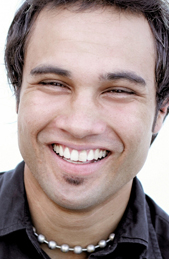Simple Cavities upon Exposed Surfaces - Part 3

In cavities of larger size and depth, requiring the cutting away of the triangular ridge, and in those involving more considerable portions of the - morsal surface of the molars, but in which the walls are perpendicular and strong, cylinders will be found to offer the most rapid and efficient means of introducing the filling.

These should be packed solidly against the walls in all directions, and the central portion filled by inserting cylinders, one after another, as long as space can be made for one with heavy wedge-shaped pluggers. The protruding ends should next be thoroughly condensed, and the surfaces finished in the manner described above.
In broad, shallow cavities, or those of uneven depth, cohesive foil is better adapted for the purpose than the non-cohesive. Such cavities need to be shaped with undercuts at opposite points, or retaining-pits or grooves at the bottom of the cavity, and so placed as to offer the greatest resistance to mechanical dislodgement.
In the introduction of cohesive foil, the retaining-pits or grooves are filled first, and the subsequent layers of gold welded to them and to each other. Cavities of uneven depth may be filled in the deepest portion with pellets of non-cohesive foil which have been rendered semi-cohesive at one end by annealing in the spirit-lamp, and the balance with ribbons, pellets, or mats of cohesive foil. In all deep cavities- those which approach very near to the pulp- this organ should be protected from thermal shock by the interposition of a layer of oxyphosphate cement or other suitable nonconducting medium.
Cavities in the buccal surfaces of the bicuspids and molars are a little more inaccessible to operation than those of the class just described, and as a majority of these cavities are at the cervical border, difficulty is often experienced in adjusting the rubber dam so as to expose the cervical mar gin of the cavity. The exclusion of moisture renders them but little more difficult to fill than those upon the morsal surfaces, except when located in the third molar, or when the patient's mouth is small, or the lips and cheeks are non-elastic.
In deciding which form of gold shall be used in each individual case, .the size and the depth of the cavity must be taken into consideration. Deep cavities are best filled with non-cohesive foil made into ribbons, cylinders, or pellets, and the surface finished with cohesive foil. Shallow cavities are always more easily filled with cohesive foil or crystal gold than with the non-cohesive. Watts's crystal gold is most admirable for filling such cavities, as it requires but slight retentive shaping to obtain firm anchorage, and it does not possess the same tendency to "ball" or curl up at the edges and rock in the cavity as does cohesive foil.
Especial attention should be given to the cervical margin in all those cavities which approach the gum line or extencj. beneath it. IsTon-cohesive foil will be more likely to insure a perfect sealing of the cavity at this point than cohesive foil by reason of its more ready adaptability. It is therefore advisable to place a thick mat or a large pellet of non-cohesive foil at the . cervical margin, and make the balance of the filling with cohesive gold.
Cavities located upon the lingual surfaces of the bicuspids and molars are quite rare except in the lingual fissures of the superior molars.

Occasionally, however, they are found in teeth of defective development, and at the cervix and upon the roots of the teeth as a result of gingival recession. Cavities of this class occurring in the inferior bicuspids and molars offer considerable difficulty to the introduction of gold fillings, and for this reason plastics are more often used in these locations than any other filling-material. When they occur in the superior molars, gold can be more readily introduced, though by reason of the limited accessibility of the cavity it becomes necessary to use hand-pressure for the greater part, if not the whole, of the operation. The same method Of filling as described for cavities upon the buccal surfaces should be pursued in filling the accessible cavities of this class.
The Dentist's Diplomat
This is an instructive summary of the qualifications and the duties of the present day Dental Assistant -- The Diplomat standing between the dentist and lost income. | read more |
Press Releases
- Learn How to Smile Again
- For immediate release
- 1st Anniversary Exhibition a Gift for FindaDentist.com
- Website Brings Patients and Doctors Together
- Dental show #4 proved to be FindaDentist.com's most successful show yet
- The Windy City Welcomes FindaDentist.com With Open Arms
- FindaDentist.com Goes Home for Show #2
- New Partnership for FindaDentist.com Encourages Brite Future for Dentists and Patients
- First Show Experience a Success for FindaDentist.com
- Internet Dental Partnership Promises Ease for Patients and Powerhouse Exposure For Dentists
- Website Launches To Ease Trouble of Finding New Dentist
- "Dental Phobia" - Are you afraid of the dentist
- Dental Office Design
- History of Teeth whitening and teeth bleaching
- Dental Code of Ethics
- Classification And Descriptive Anatomy Of The Teeth.


